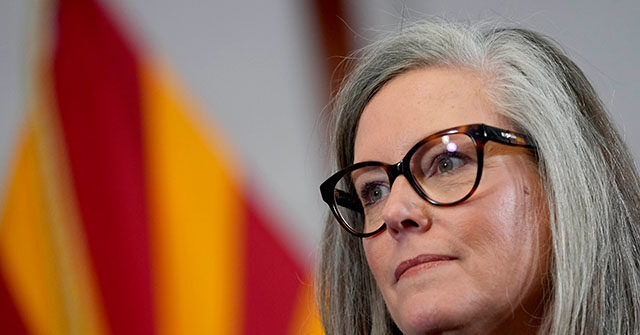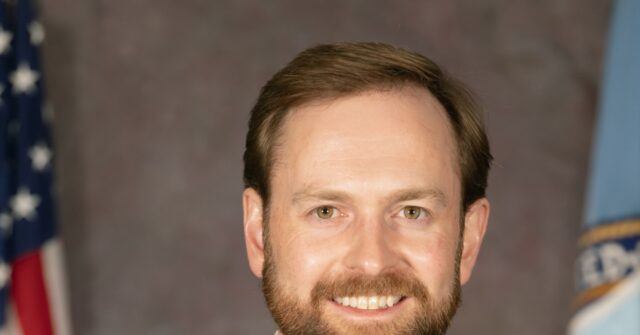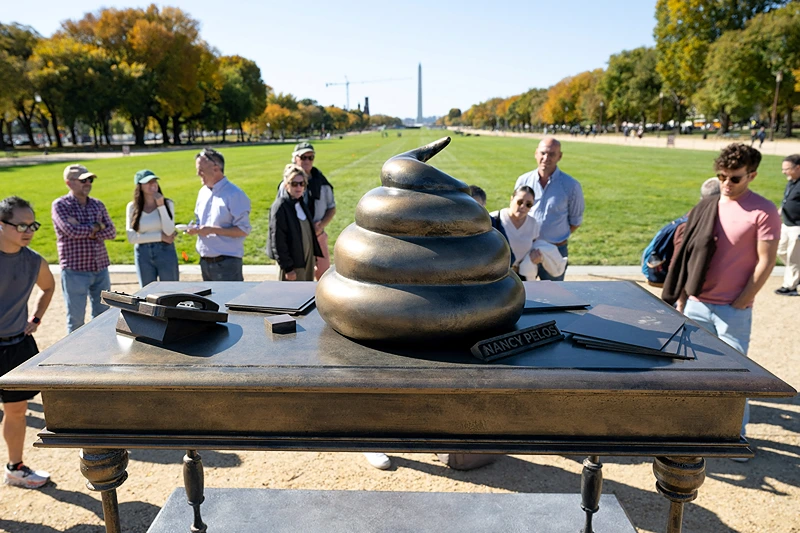The Suicide Epidemic Demands Fresh Solutions
Deaths of despair are downstream from the deterioration of national unity. The post The Suicide Epidemic Demands Fresh Solutions appeared first on The American Conservative.

The Suicide Epidemic Demands Fresh Solutions
Deaths of despair are downstream from the deterioration of national unity.

September was Suicide Prevention Month. This year we should’ve all been aware of that fact. Were we? More than 50,000 Americans died by suicide last year—more than any year on record. The year before that, the number had reached its highest point in more than 80 years.
Our schoolmates, friends, co-workers, and even our family members have been just some of the individuals behind the metric. If we don’t all know someone, we all at least know of someone. As much as we have grown accustomed to this, it’s not normal, and it demands reflection.
Yet as these numbers climb, not much has changed in the discourse surrounding how to battle this epidemic. We’ve seen lots of policy. The 2024 Child Suicide Prevention and Lethal Means Safety Act, the 2023 Suicide Prevention Act, the 2022 Resilience of Our Nation’s Great Veterans Act, the 1995 Gay and Lesbian Youth Suicide Prevention Act, and hundreds of virtually identical bills have been introduced—and often passed—in Congress. Who would vote against suicide prevention?
We have million dollar grants, trained healthcare workers, awareness initiatives, hotlines, databases—all of it. And, well, that’s great. With our government spending our taxes on so much stupidity, who would even consider verbalizing opposition to any of this?
But, while throwing money at more and more prevention programs may intuitively seem like an appropriate response, only a fool can expect the same results without radical change. “Desperate times [do indeed] call for desperate measures,” as some attribute to the more gracious Hippocrates.
We are in desperate times. The CDC’s July 2024 report showed that the suicide rate per 100,000 people in 2022 was 14.2. For context, the rate was 15 in 1941—the year that Japan staged a surprise attack on Pearl Harbor. Back then, the United States faced the Great Depression (fittingly named), and the poverty rate was three times higher than what it is in 2022.
The sheer number of people taking their own lives made sense in 1941. After all, the world was at war and the nation in crisis. In an era of better economic conditions, reduced social stigma and plenty of wholesome government-funded programs, though, what straightforward indicators exist to explain the trend?
It’s a complicated question. This summer, at an American Enterprise Institute event, I asked the chairman of Harvard’s economics department, Edward Glaeser, if there was a more effective way policymakers could direct resources. “I’m sure the government can do better,” Glaeser told me, before telling me that despite having written on teen suicide for 20 years, “things related to mental health are very, very important and very hard to get right.”
“It’s hard for me to be against suicide prevention hotlines, of course, but I really don’t know enough about how to fix this,” he said.
Understanding that the question is complicated, I contacted Roberto Rigobon, a Massachusetts Institute of Technology applied economics professor, known for his research on social wellbeing. Rigobon said that he “thinks the idea of addressing the issue with hot cloths [a Spanish idiom for patching over a problem without truly fixing it] is a good topic.”
“The problem of mental health and suicide is very complex and reflects a social system that leaves many people abandoned,” he said. He emphasized that research (and policy for that matter) should focus on answering questions like “How important is the role of social media in suicides?” and “How important are family and social support?”
Regarding the second question, he pointed at a paper by Anne Case and Angus Deaton called “Death by Despair,” “which states that those affected by suicides and illnesses related to depression are primarily white Americans, around 50 years old, and without a college education.”
“Latinos in the same group (50 and no college) do not face these problems, suggesting that family and social support might be important,” Rigobon explained.
Other questions he put forward included: “How important are the types of jobs they have? Or the conditions of their housing? Or their financial conditions?”
One thing we know for a fact is that poverty alone isn’t one of those prescient indicators. Although there is a case to be made for how the decrease in manufacturing jobs in the Midwest accentuated the problem in the region, the broader national trend is one that economics alone can’t easily explain. Poverty has been cut in half since the late 1950s.
Furthermore, Americans are seeking therapy more than ever before. Thus, the argument that the problem originates from not talking about mental health enough is faulty. Are Americans ending their lives because folks are meaner? Less accepting? Racist? Homophobic? We call this presentism.
The reality is that suicide prevention programs have only become better financed over time, with hundreds of millions of dollars in funding authorized by Republicans and Democrats alike. In September 2022, for instance, the Department of Health and Human Services awarded more than $200 million in “grants for suicide prevention and behavioral health care for at-risk communities.” And regarding reserving special spots in the calendar, last year, President Joe Biden announced that the tenth of that month is now also “World Suicide Prevention Day.”
None of these steps is bad; maybe they are no-brainers. But when the numbers consistently increase, doing something different should be leaders’ obligation.
No scarcity in spiritual reasoning exists to explain the trend. Much has been said about how there is an inverse relationship between a country’s religiosity levels and its suicide rates, which is one of the theories often cited in the rapidly secularizing West. A Christian revival isn’t the safest bet, however, so let’s consider some of the other less theological theories (while not forgetting Cardinal Henry Edward Manning’s maxim, “All human conflict is ultimately theological”).
Social critics in the 1970s like Tom Wolfe and Christopher Lasch warned about the destructive effects of cultures of therapeutics and narcissism. In short, defenders of their frameworks argue that the nation’s once-prevailing healthy individualism has been morphing into destructive self-adulation. These arguments pair well with a reading of Robert Putnam’s famous Bowling Alone, which dives into the many ways social interaction has declined in the last decades. It’s best to think about isolation, narcissism and social dysfunction as interdependent. It doesn’t take a PhD to decipher that spending a lot of time inside your own head makes you more self-absorbed, more antisocial.
The works of these thinkers, paired with the data (increases in narcissism diagnoses, increases in loneliness, etc), help explain how and why people are replacing human interaction, even intimacy, with their own pitiful selves. In effect, we are attempting to treat a cultural illness characterized with mere advocacy and modern medicine while ignoring the effects of declining community and social cohesion.
Fast forward, and iterations of these culture-centric explanations have influenced how some of us think about the rise of depression and self-harm. In part, the logic that leads us today to decry the addictiveness of social media, as well as how it accelerates harmful interpersonal comparisons and leads to kids skip family dinners, is the same as the logic once advanced by the social critics of the Silent Generation.
What has changed is that following an era of pronounced hyperindividualism, millions have sought to fill the void with weaker forms of “community.” And this is not just about how people are spending more time on the chats and less time at the parks. In college campuses and in the workplace, sense of community is increasingly built around immutable characteristics. Meanwhile, the most inclusive versions of “us”—from nationhood to locality—decline. It is no surprise that in the social causes of the day, you see more “my” than “our”—more my bodies, my peoples, my rights. This alone is worthy of a book. Title it: “How Inclusivity Excluded Us.”
Compounded with the effects of social media, the country faces a loneliness epidemic in which even those who find some company often find it in communities that are in themselves isolating. True togetherness has become the sacrificial lamb in the advancement of so many modern, vacuous causes.
Last year, U.S. Surgeon General Vivek Murthy made headlines when he compared the effects of isolation with smoking 15 cigarettes daily. “Even before the onset of the COVID-19 pandemic, approximately half of U.S. adults reported experiencing measurable levels of loneliness,” one of his press releases read.
It shouldn’t be just him saying this and the headlines should be seen more often. Some activist journalism, in fact, doesn’t sound bad here.
If anything has become more evident in the last ten years, it is that it is ill-reasoned to believe that intolerance, inadequate education, or aversion to therapy are to blame for self-harm’s rise. We can exhaust all of those, and to some degree we have.
Our leaders should be talking about the ills we face and about what we can do publicly and frequently. As cheesy as it may sound, it is true: America desperately needs leaders that inspire communal reflection—talk therapy for the nation, one could call it.
It is not lack of liberty, falling stocks, inequality, insufficient diversity or any of the usual suspects. Instead, it is a lack of community that is literally killing our country. It is not kumbaya to acknowledge this. It is reality.
We must take the deterioration of community seriously, as if it deserved policy change. Some groups, like the Coalition to End Social Isolation & Loneliness, founded in 2018, have been stepping in the right direction. But more is needed. Policies that inspire national unity are only rational—and freaking out about how this sounds North Korean is simply ludicrous.
Thinking about policies that incentivize community service (through public schooling, maybe) sound like good ideas too. Building parks for recreation, mandating that local governments run more gatherings, and gearing awareness programs toward fighting isolation concretely and not fixating on its successor are all parts of the same equation. Maybe, it’s time to calm down with the “Stop Bullying” campaigns and start some “Loneliness Kills” ones.
No one says that it’ll be easy, but the day our leaders start talking about it as much as they talk about immigration and abortion will be the day things get better. If we continue on the same path, we will be sticking band-aids on injuries that require intensive care.
The post The Suicide Epidemic Demands Fresh Solutions appeared first on The American Conservative.
What's Your Reaction?















